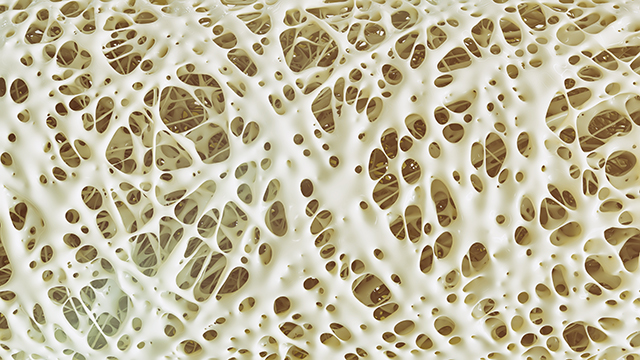
Natural risk factors for osteoporosis
One of the key problems with osteoporosis is that it is difficult to detect beforehand. Most people only discover it when they get a fracture. There are unavoidable risk factors you can watch out for to help you know if you have an increased risk of osteoporosis. These include:
- Sex – Females are more at risk of developing osteoporosis than men.
- Age – As people get older, the risk of osteoporosis increases.
- Family history – Osteoporosis has a strong genetic component that can be passed down in families. Having a relative with osteoporosis increases the risk of developing it in the future.
- Race – People who are of Caucasian or Asian descent are more prone to having osteoporosis.
- Body frame size – People who have small body frames have an increased risk of developing osteoporosis. Having lower bone mass puts them at higher risk because there is less bone mass to draw calcium from in case the body needs it.
If an individual has any of these, it is best to have regular check-ups to help detect it early on. (Related: Osteoporosis remains undiagnosed in millions of Americans; here's how to beat the disease with nutrition, exercise and sunlight.)
10 Things that can increase osteoporosis risk
While there are unavoidable risk factors for osteoporosis, there are certain factors that can be prevented by adopting a healthy and active lifestyle. The following events and practices may contribute to this condition:
- Falls – Having brittle bones is a red flag for fractures. Not only that, but having a fracture increases the risk of having another one in the future. While it is difficult to control these events when you're outdoors, you can make some adjustments inside your house to make it fall-proof. These include:
- Installing grab bars in the bathroom
- Keeping pathways clear of clutter
- Having handrails on both sides of the stairs
- Lack of exercise – Bones rebuild themselves when a person exercises. The extra pressure and pain from exercise encourages bone mineralization. A gym membership is not necessary. Taking the time to walk and move from place to place are little steps to help maintain bone health.
- Pressure ulcers – If you lie in bed for too long, you can develop pressure ulcers. These are painful breaks in the skin over bony areas and are prone to infection. If an infection is left untreated, the bony area becomes more prone to diseases.
- Eating very low-calorie diets – Not eating enough calories can lead to rebound hunger and muscle mass loss, which can reduce bone density.
- Not using orthotic devices – These devices help stabilize joints and help fractured bones stay still while they heal. Not using one when you need it can make you more prone to accidents.
- Lack of sun exposure – A person can acquire vitamin D from sun exposure. This compound is crucial for increasing calcium absorption in the body, which helps build stronger bones.
- Smoking – Researchers found that there is a link between tobacco use and decreased bone density, increasing the risk of osteoporosis.
- Drinking caffeinated coffee – One study found that drinking two cups of caffeinated coffee daily may contribute to decreased bone density among postmenopausal women. Researchers theorized this was due to the increased urinary excretion of calcium that can lead to osteoporosis.
- Lack of nutrients – Vitamin D, calcium and protein are not the only nutrients needed to maintain bone health. Other compounds, such as vitamin K and C, are helpful contributors as well.
- Not eating enough veggies – Vegetables, like broccoli, cabbage and spinach, are rich sources of antioxidants that help protect cells – including bone cells – from oxidative stress. Additionally, eating yellow and green vegetables help increase bone mineralization among children and maintain bone mass among young adults.
Some risk factors for osteoporosis simply cannot be avoided, but for the ones that you can control, simple lifestyle changes can not only improve bone health, but overall health as well.
Sources include:
Please contact us for more information.






















